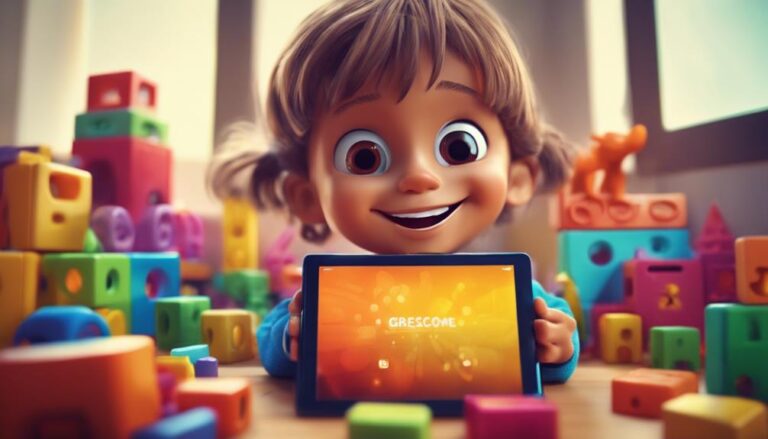5 Essential Old School Animation Techniques for Video
By mastering old school animation techniques, you can elevate your video production and create timeless visuals. Traditional Hand-Drawn Animation involves drawing 24 frames per second, refining character designs, and using pencil tests to perfect timing and spacing. Stop-Motion Animation Mastery requires breaking down animation into individual frames and crafting puppets with movable joints. Rotoscope Animation Technique involves tracing over live-action footage, while Claymation Animation Style and Cutout Animation Technique focus on modeling consistency and clever design. You'll discover that understanding these fundamental techniques will unlock a world of creative possibilities. Each holds its own set of challenges and unique opportunities.
Key Takeaways
- Master traditional hand-drawn animation by drawing multiple frames with slight variations for smooth motion.
- Break down stop-motion animation into individual frames, capturing each movement in a sequence at 24 frames per second.
- Use rotoscope animation to create smooth motion by tracing over live-action footage with a preferred drawing tool.
- Achieve claymation animation by ensuring modeling consistency and texture exploration to bring characters to life.
- Create cutout animation by designing simple, bold characters and objects that can be easily manipulated for smooth movement.
Traditional Hand-Drawn Animation
When you hold a pencil and begin sketching the first frame of a traditional hand-drawn animation, you're engaging in a time-honored process that's been the backbone of the animation industry for over a century.
To create smooth motion, you'll need to draw multiple frames, each with slight variations in your character's pose or movement. Typically, you'll aim for 24 frames per second to achieve a seamless animation.
Before committing to a final animation, it's essential to create pencil tests to ensure your character designs and movements are working as intended.
These tests allow you to review your animation, making adjustments to timing, spacing, and motion. Character designs should be thoroughly planned and refined before animating, as changes to a character's proportions or features can be time-consuming and costly to implement later on.
To maintain consistency, it's crucial to use reference images and turnarounds of your characters.
This ensures that your designs remain accurate, even when viewed from different angles or perspectives. By following these traditional techniques, you'll be able to create high-quality, hand-drawn animations that showcase your skills as an animator.
Stop-Motion Animation Mastery
Mastering stop-motion animation requires patience, precision, and a keen eye for detail.
You'll need to break down your animation into individual frames, capturing each movement in a sequence. This technique can be applied to various objects, from puppets to inanimate items, making it versatile and creative.
To achieve a smooth animation, you'll need to set the right frame rates. Typically, stop-motion animations are shot at 24 frames per second.
However, you can experiment with different rates to achieve unique effects, such as time-lapse or slow motion.
Puppetry basics are also essential in stop-motion animation. You'll need to craft or design your puppets with joints that can be manipulated to create realistic movements.
Consider using armatures or skeletons to help your puppets hold their shape and maintain consistency throughout the animation.
When capturing each frame, ensure that your lighting and camera settings remain consistent. Use a tripod to keep your camera stable and make adjustments in small increments to avoid noticeable jumps in movement.
Rotoscope Animation Technique
Within the realm of old school animation techniques, the rotoscope animation method offers a unique approach to bringing your ideas to life.
This technique involves tracing over live-action footage, frame by frame, to create a stylized animation. You'll need to import the footage into your animation software and set the frame rates to match the original video. Typically, you'll work with frame rates of 24 or 30 frames per second.
To begin rotoscoping, you'll need to create a new layer for each frame and start tracing over the live-action footage using your preferred drawing tool.
You can use a variety of techniques, such as drawing directly on the screen or using a lightbox to help you achieve accurate tracings.
As you work, you'll need to maintain consistency in your drawings to ensure smooth motion. Rotoscoping can be a time-consuming process, but it allows for a high level of control over the animation.
This technique can also be used in conjunction with motion capture technology to create more realistic character movements.
Claymation Animation Style
You've likely seen the charming results of rotoscoping in various animated films, but another old school technique that evokes a sense of nostalgia is claymation.
This stop-motion technique involves shaping and molding clay or plasticine into three-dimensional characters or objects, which are then animated frame by frame.
To achieve a consistent look, modeling consistency is key. This means ensuring that the characters' proportions, shapes, and textures remain the same throughout the animation.
When working with claymation, you'll want to experiment with different textures to add depth and visual interest to your characters and environments.
Texture exploration involves mixing different materials, such as fabrics, foams, or found objects, to create unique and engaging surfaces. This can help to bring your characters to life and add an extra layer of realism to your animation.
By combining modeling consistency with texture exploration, you can create a cohesive and immersive claymation animation that captivates your audience.
With patience and practice, you can master this traditional technique and achieve stunning results.
Cutout Animation Technique
The cutout animation technique involves a fundamental process of designing, cutting, and arranging flat characters or objects to create the illusion of movement.
This technique has been used in traditional animation for decades, often using paper cutouts. However, with the rise of digital technology, you can now create cutout animations using digital layers, making the process more efficient and flexible.
When creating a cutout animation, you'll need to plan and design your characters and objects carefully.
This includes breaking down movements into individual frames and designing each element to be easily manipulated. You'll also need to consider the background and how your cutouts will interact with it.
To create a compelling cutout animation, consider the following:
- Use simple, bold designs to make your cutouts stand out against the background.
- Experiment with texture and color to add depth and visual interest to your animation.
- Pay attention to timing and spacing to create a smooth, natural movement.
Frequently Asked Questions
What Software Supports Old School Animation Techniques Today?
If you're chasing retro aesthetics and vintage vibes, you'll find support in software like Adobe Animate, OpenToonz, and Toon Boom Harmony, which offer traditional animation techniques alongside modern features and tools.
Can I Animate Without Formal Artistic Training?
You don't need formal training to animate; raw talent, dedication, and self-learning can suffice. Familiarize yourself with software, watch tutorials, and practice consistently to develop your skills, making up for lack of formal education.
How Do I Protect My Animation From Copyright Infringement?
To safeguard your work, you're taking proactive steps to protect your creation from copyright infringement. Consider implementing legal precautions, such as registering your work and using Creative Commons licenses to define usage rights.
Can I Use 3D Software for Traditional Animation Styles?
You can use 3D software to achieve traditional animation styles by employing techniques like cell shading, which mimics hand-drawn looks, and texture mapping, which adds detailed, organic textures to your 3D models.
What's the Average Cost of Old School Animation Production?
When planning your animation project, you'll face budget constraints and tight production timelines. Average costs vary, but a 1-minute old school animation can range from $3,000 to $30,000 or more, depending on complexity and labor.
Conclusion
You've explored the fundamentals of traditional hand-drawn animation, mastered the intricacies of stop-motion, and delved into the unique techniques of rotoscope, claymation, and cutout animation. These classic methods can elevate your video production, injecting a distinctive charm and character. By combining traditional techniques with modern software, you can create captivating visuals that stand out in today's digital landscape. Apply these skills to breathe new life into your animation projects.






